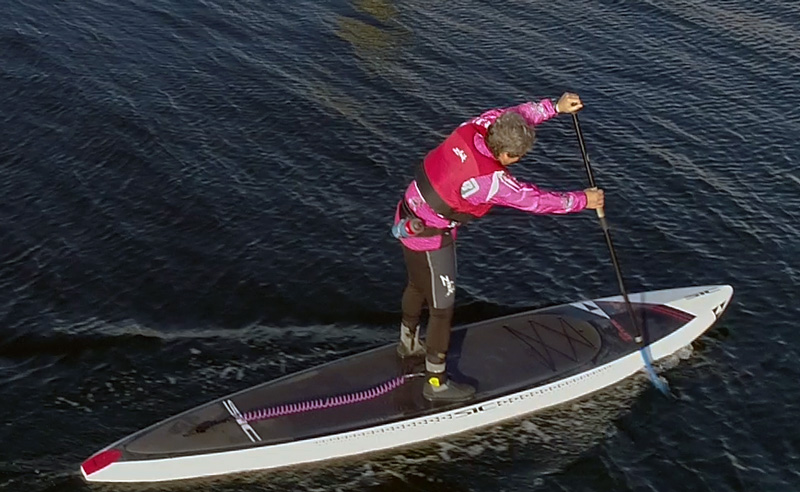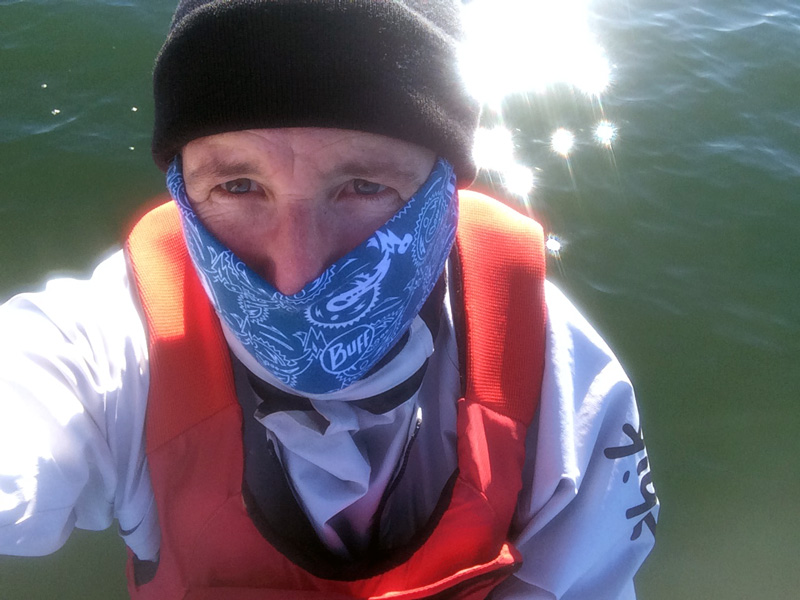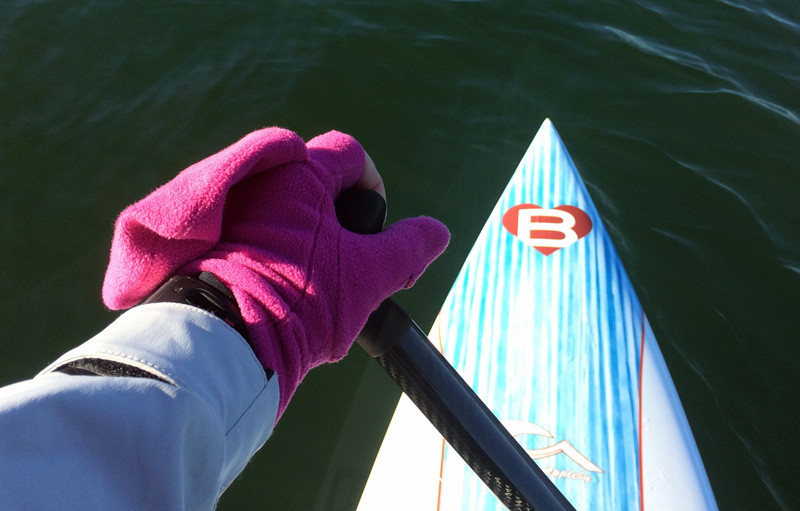I have a confession to make; I’ve already logged my first swim of 2019. It was NOT intentional, though it was somewhat predictable.
Here’s the biggest conundrum of standup paddling in winter: shallow water is safest, because if you lose your balance and fall off, you’ll be able to stand up. However, the most common reason for falling off (at least when paddling along a rock-lined shoreline) is hitting an unexpected boulder with the skeg—and that only happens in shallow water.

After six years of paddling the southern shoreline of Dutch Harbor, I’ve already hit most of those rocks. But last week I paddled north instead, to avoid a flock of shotgun-toting duck hunters. (Even in the dampness of hindsight, it still seems like the safer choice.)
So there I was, happily making just under four knots about fifty yards off the beach, when suddenly a seaweed-covered rock appeared right below the surface. I back-paddled as hard as I could, but the skeg still hit with enough force to throw me to my knees—and that far forward, the board is too narrow to stay onboard. I slid off, into what turned out to be waist-deep water—and, already gasping with the shock, stood up. (See conundrum, part one.)
I always wear my board leash, so less than thirty seconds later I’d pulled the board alongside and climbed back onto it. Now came the test, though. Would my dripping clothing—chosen for its sweat-free paddling comfort in 39 degree air—still keep me warm after a dunking? (I’d like to tell you the exact water temperature, but the NOAA web page is currently furloughed.)
Twenty minutes later, I stepped off the board still happy and warm—though definitely damper than usual, especially from the waist down. My biggest concern was why one foot was soggy, while the other remained quite dry.
If I hadn’t been exerting enough to raise my body temperature, I’m sure I would’ve chilled down fast. And if I hadn’t been wearing clothing that was designed to insulate even when wet and still be stretchy enough to move in, even layered up for January, this story might’ve had a completely different ending.

In November 2014 I wrote Winter SUP: Dress for Success. Since then, I’ve upgraded even more of my winter paddling gear to Zhik. A ten year old gray hydrophobic fleece top is still my go-to base layer; this winter I doubled that by adding their new improved black quarter-zip, which is almost twice as thick as the original and more water repellant (but still quite breathable). Over that I add some sort of wind block layer, depending on air temperature. For bottoms, I double up Orspan pants with an ancient pair of Deckbeater shorts for extra insulation.
As frostbiters know all too well, toes and fingers are the hardest thing to keep warm. Santa recently delivered some Showerpass waterproof socks, which I wear inside ancient neoprene boots; they are much, much more comfortable (and easier to put on) than the Rocky Gore-Tex socks I used to wear. That’s why I was so curious about why only my left foot was sopping wet; it was the first time I’d really tested the top seals. Clearly I did a better job of layering on the right leg.

Gloves? Well those pink beauties aren’t exactly new or technologically advanced, but their mitten-flaps kept my wet fingers frost-free.
Water-worthy clothing isn’t a luxury this time of year; it’s a safety necessity. Thanks to Zhik and a few other companies, I can paddle all winter and stay warm. What I said in November of 2014 still rings true: “Unlike frostbite sailing, SUP is surprisingly dry—assuming I pick my days carefully and stay on the board. Winter is not the time to start paddling, but it’s a great time to keep paddling.”
Great fun!
I was always impressed when you were telling me you were going for a paddle in the middle of winter! Haha! This answers the other question I had. 😉
Just came back from another one, no swim!